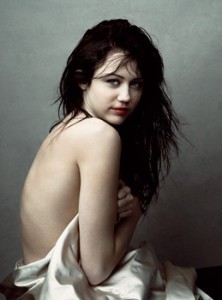Lolita is a bone chilling novel written by Vladimir Nabokov that dates back to 1950’s Russia. Today, Lolita is still the centerpiece for what is widely known as the first published work that involves the topic of incest. The novel is a piece of classic art. Because of the success of Lolita, it has been used as a learning device for many professionals, including Meenakshi Gigi Durham, whom wrote the book The Lolita Effect: The Media Sexualization of Young Girls and Five Keys to Fixing It.
Lolita, the novel, is the story of a middle-aged man who is obsessed with a twelve-year-old, and later becomes sexually involved with her after he becomes her stepfather. “Lolita” is the nickname Humbert Humbert gives to Delores Haze.
Think about this: Lolita was written in 1955. 1955! Fast forward and it is now 2017. 2017!
I am boggled by the lack of urgency in 2017 to tackle these issues given how we now live in a world where girls who get involved in grown-up eroticism begin at younger and younger ages. Girls these days are encouraged to become involved in the sphere of fashion, images, and activities that exploit sexuality.
Here are some really eye-opening examples of what I am talking about, according to Durham:
- Abercrombie & Fitch once sold thong underwear for preteens. The seductive slogans on the thongs included Wink, Wink and Eye Candy.
- My faaaavorite store, Wal-Mart, sold panties for teenage girls that said Who needs credit cards…?…. on the crotch.
- The British chain, BHS, was once selling an an entire line of push-up bras and lacy briefs to preteens called Little Miss Naughty. If the British are involved, then we know things are out of hand. They are supposed to be the good guys.
- Another British entity, Tesco, once sold a Peekaboo Pole Dancing kit. This was a toy… promoting sex. Unbelievable.
- The last point involves the tale of one of the most polarizing pop culture figure in America, Ms. Miley Cyrus. When Miley was fifteen, she caused an uproar from people who believed she was too young to be so seductive. At the time, Miley was a young teen sensation and role-model. She played the innocent character of Hannah in Disney’s Hannah Montana. When she posed topless for Vanity Magazine questions and eyebrows were raised.

Then fifteen-year-old Miley Cyrus poses topless for Vanity Magazine. She would receive much criticism for the photo. Is a fifteen-year-old actually capable of distinguishing the difference between seductive and not? Was Miley yet capable of knowing the type of reaction the photo would cause worldwide?
We have already discussed in length the difficulty children have when it comes to saying no to an older and more powerful adult. I believe Miley was too young to understand the impact this photo would cause. And even if she had her own self-doubts (she later said she was “embarrassed” by the photo) she was probably told how great the photo looked and the amazing things the photo would do for her then-budding career.
Remember: this is the same Miley Cyrus who said she did not swear (skip ahead to 25:00) the first time she was interviewed by Barbara Walters as a “Most Fascinating Person” in 2008.
Whatever your take on Miley may be, remember how she might have been negatively influenced when she was younger. Even famous people can be influenced. Miley is a classic public example of this sphere of fashion that girls are being infiltrated by as young as three-years-old.
Lolita is a reminder that there is some sort of public acknowledgement that a preteen girl could be sexual. Here’s Durham’s take on the subject:
“One reason for our fascination with the sexy little girl is her tricky double role in a contemporary society – she is simultaneously a symbol of female empowerment and the embodiment of a chauvinistic “beauty myth”. She invokes the specter of pedophilia while kindling the prospect of potent female sexuality.”
Clearly there is a bold focus on an incestuous liaison between grown men and little girls. That is what has made Lolita the character into a fantasy figure. Sadly, we do not see her as a sexually abused and tragic figure in the novel.
As Durham so eloquently reminds us, Lolita has become our favorite metaphor for a child vixen. Lolita was a sexual character. However, Lolita was not allowed to experience her sexuality in a safe and ethical direction of her own choosing. Instead, her sexual appeal was imposed on her in ways that suited Humbert’s needs and vision. She was raped and victimized, and she was deprived of her childhood.
Lolita, in truth, is a cautionary tale.